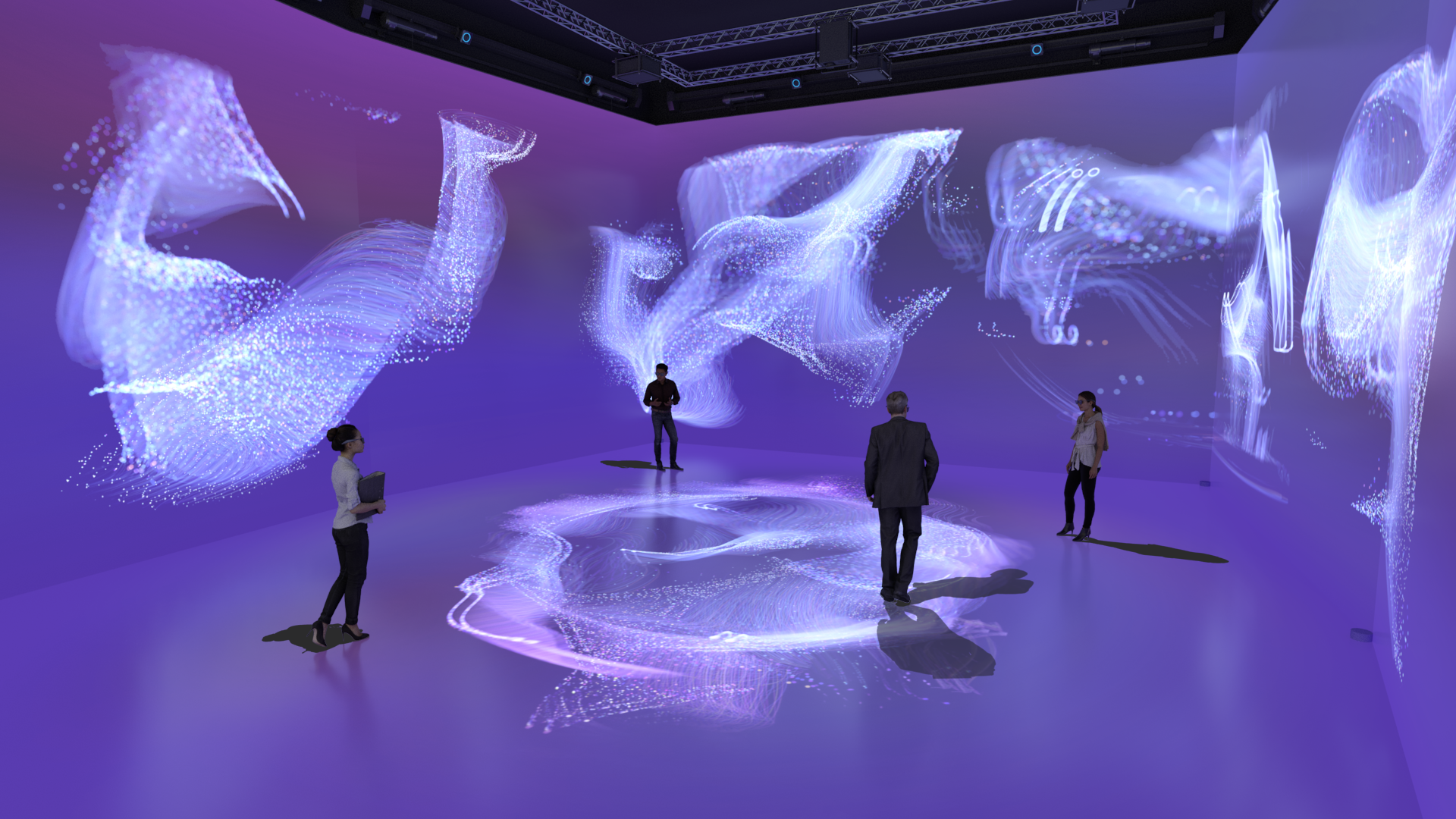The X-Reality-Lab at the Mozarteum University is a new immersive space for music, visualization, interaction, performative art, extended reality, as well as artistic and scientific research. To implement all these experiments, the free open-source software mozXR is being developed.
The Mozarteum University in Salzburg and the Ars Electronica Futurelab are collaborating on the X-Reality-Lab, where artistic innovations – from interactive dance performances to immersive theater productions – can be realized at the highest technical level. The space is equipped with 3D projectors, a sophisticated audio system, and laser tracking – operated via the open-source framework mozXR.
mozXR will be freely available to students, artists, and creatives – a game-changer in the development of immersive art, which is often associated with high costs. Interested parties can also use mozXR to implement complex projects for the X-Reality-Lab and similar spaces independently and with as few technical hurdles as possible. The first demos and the release of the open-source software mozXR are planned for spring 2026. The X-Reality-Lab was presented to the public in October 2025 as part of the opening ceremony of the university’s new location UMAK (Universität Mozarteum am Kurgarten).
X-Reality-Lab technology
The X-Reality-Lab, with a hexagonal floor plan and a floor area of 165 m², features stereoscopic 3D projection technology on five walls and the floor. The 3D audio system complements this with a matrix of speakers and subwoofers to create a very unique audiovisual experience. In addition, sensors and tracking systems can be used to capture people and objects, such as robots, and integrate them into the immersive experience.
The project draws on the Ars Electronica Futurelab’s many years of experience in developing Deep Space 8K at the Ars Electronica Center in Linz. The Futurelab tracking system pharus is also used in the X-Reality-Lab.
mozXR for easy use
mozXR is provided as an open source framework (OSF) that can be used to develop content for the X-Reality-Lab and other projection spaces – including Deep Space 8K. mozXR not only ensures that the technologies installed in the X-Reality-Lab, such as pharus, OptiTrack and stereoscopic 3D, are as user-friendly as possible. It is designed to minimize the technical hurdles for any scenario in which multiple screens or canvases are used. The aim is to enable creatives to focus entirely on the content of their work.
To aid in getting started, mozXR provides basic implementations and example projects, templates, and learning content such as tutorial videos. mozXR is available for the established game engines Unreal Engine and Unity Engine, as well as TouchDesigner.
A space for research and creativity
The X-Reality-Lab is primarily designed for immersive performative arts and artistic research, but it also opens up a wide range of applications, including human-machine interaction, cultural heritage, data visualization, and sonification. This project will establish an international hub for immersive art and research in Salzburg, which will release new creative potential and improve accessibility for artists worldwide with lasting effect.
Credits
Ars Electronica Futurelab: Patrick Berger, Kerstin Blätterbinder, Manuel Dobusch, Roland Haring, Peter Holzkorn, Otto Naderer, Daniel Rammer, Raphael Schaumburg-Lippe
PARTNER: Universität Mozarteum Salzburg
